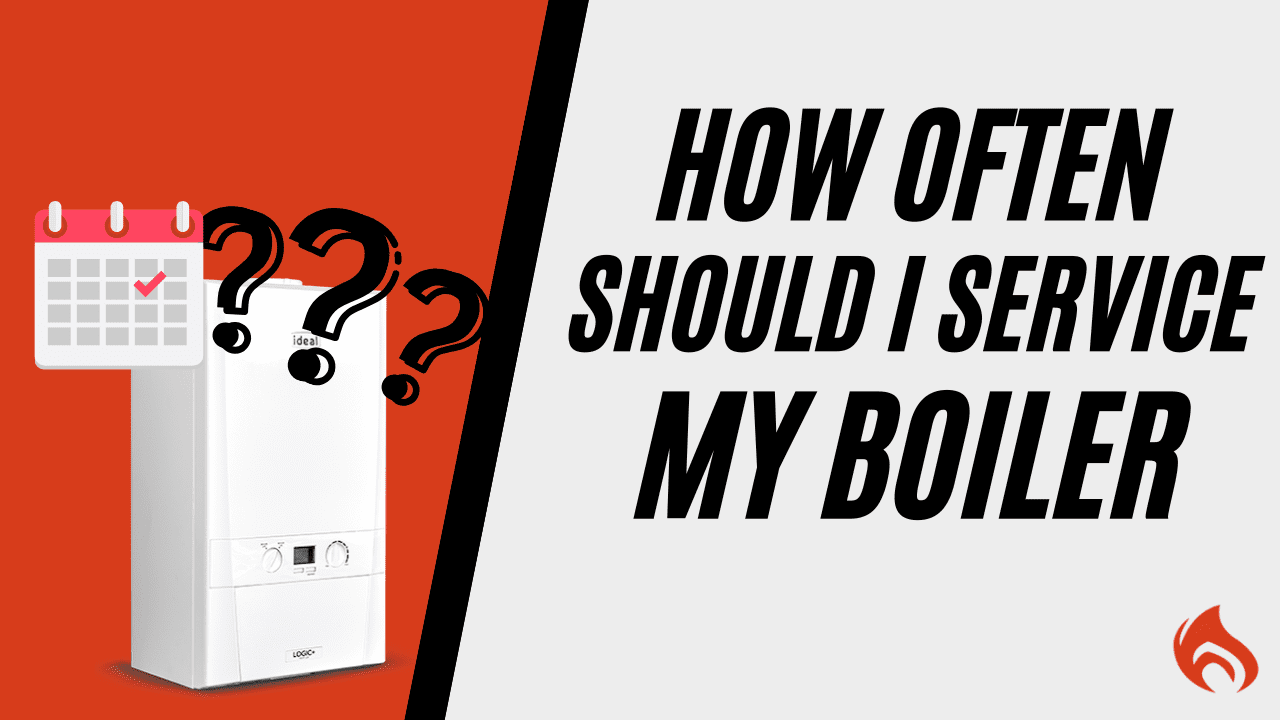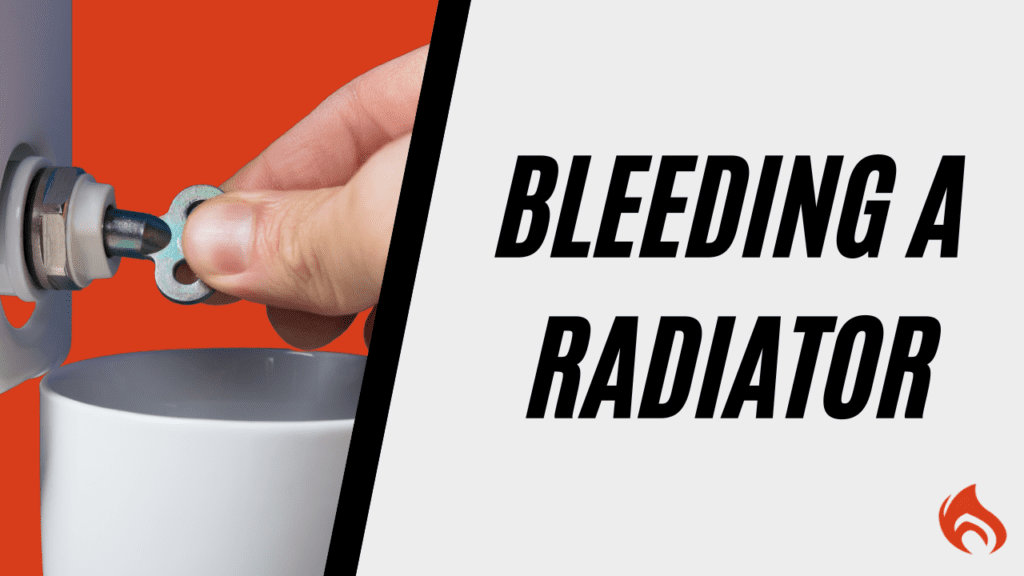
How Often Should I Service My Boiler?
How Often Should I Service My Boiler? Table of Contents Picture this: it’s the middle of winter, your home is

If your radiator feels cold at the top but warm at the bottom, chances are it has trapped air preventing it from heating efficiently. Bleeding your radiator is a simple yet essential maintenance task that ensures your central heating system runs smoothly and keeps your home warm. In this guide, we’ll take you through the process step by step.
Over time, air can become trapped inside your central heating system, creating air pockets in your radiators. This prevents hot water from circulating properly, leading to cold spots and reduced efficiency. The presence of air in the system forces your boiler to work harder to maintain the desired temperature, increasing energy consumption and utility costs. Additionally, air pockets can contribute to corrosion inside the pipes and radiators, potentially shortening the lifespan of your heating system and leading to expensive repairs.
Bleeding the radiator releases this trapped air, allowing the system to function optimally and distribute heat evenly throughout your home. A well-maintained system not only improves comfort but also reduces energy wastage, making your home more environmentally friendly. Regularly bleeding radiators can also help prevent noisy heating systems, as trapped air often causes gurgling or banging sounds when the heating is on.

A radiator key (or a flat-head screwdriver for modern radiators)
A cloth or towel
A small container or bowl (to catch any drips)
Gloves (optional)
If you’re more of a visual learner, check out one of our installers at Cheshire Boilers demonstrating how to bleed a radiator. Watching an expert perform the task can make it even easier to follow along and understand each step in real time.
Step 1: Turn Off the Heating
Before bleeding your radiator, switch off your central heating system. This prevents hot water from being pushed through the system, reducing the risk of burns and making it easier to remove air from the radiator. Allow the system to cool for at least 30 minutes to ensure it’s safe to work on.
Step 2: Locate the Bleed Valve
Find the bleed valve on your radiator. It’s usually located at the top corner and may require a radiator key or a flat-head screwdriver to open. Ensure you have easy access to the valve before proceeding.
Step 3: Place a Cloth or Bowl Under the Valve
To avoid any mess, position a cloth or small bowl underneath the bleed valve to catch any escaping water. This will help protect your flooring and prevent unnecessary cleanup afterward.
Step 4: Open the Valve Slowly
Using your radiator key or screwdriver, turn the bleed valve counterclockwise slowly—only a quarter to half a turn. You should hear a hissing sound as trapped air escapes. Be careful not to open it too far, as this could result in excessive water leakage.
Step 5: Wait for Water to Drip Out
Once the hissing stops and water starts to trickle out steadily, all the air has been released. Quickly tighten the valve back by turning it clockwise. Wipe away any excess water to prevent drips from damaging your radiator or flooring.
Step 6: Check the Boiler Pressure
After bleeding your radiators, check your boiler’s pressure gauge. If the pressure has dropped too low (typically below 1 bar), you may need to repressurize your system. This can usually be done by using the filling loop on your boiler. Refer to your boiler’s manual for instructions on how to do this safely.
Combi Boiler: Combi boilers have a built-in filling loop, usually a flexible silver hose with valves on either end. To top up the pressure:
Locate the filling loop, usually found beneath the boiler.
Open both valves slowly to let water enter the system.
Watch the pressure gauge, and once it reaches around 1.5 bar, close the valves.
Turn the heating back on and check for normal operation.
Conventional Boiler (with a Feed and Expansion Tank): Conventional systems typically self-regulate pressure via the feed and expansion tank in the loft. If your pressure remains low:
Check if the feed and expansion tank has enough water.
If the tank is empty, ensure the ball valve isn’t stuck, preventing it from refilling.
If you continue to have low pressure, it may indicate a blockage or a faulty valve requiring professional assistance.
System Boiler: System boilers work similarly to combi boilers but store hot water separately. To top up pressure:
Locate the external filling loop or filling key (if your system has one).
Open the valves gradually to allow water to enter the system.
Keep an eye on the pressure gauge and close the valves when it reaches around 1.5 bar.
Restart the heating and check for any issues.
If your boiler pressure frequently drops, it could indicate a leak in the system. Contact a professional if you are regularly topping up the pressure.
Step 7: Turn the Heating Back On
Switch your central heating system back on and allow the radiators to warm up. Check each radiator for any remaining cold spots to ensure the air has been fully released. If necessary, repeat the bleeding process for any radiators that still feel unevenly heated.
It’s a good practice to check your radiators at least once a year, especially before winter sets in. Cold weather increases the demand on your heating system, and ensuring your radiators are free from trapped air will help maintain efficiency and prevent any disruptions during colder months.
If you notice cold spots, strange noises (such as gurgling or banging), or inconsistent heating, it’s a sign that they need bleeding. In some cases, these issues could indicate a larger problem, such as excessive sludge buildup or an inefficient boiler. If bleeding your radiators does not resolve the issue, it may be necessary to flush the system or seek professional assistance.
Additionally, if you have recently had any work done on your heating system, such as a new boiler installation or pipework adjustments, it’s a good idea to bleed your radiators afterward. Air can enter the system during maintenance, leading to heating inefficiencies that can easily be fixed by bleeding the radiators.
Regular maintenance can help prevent bigger issues with your heating system and improve efficiency, ultimately saving you money on energy bills and prolonging the life of your central heating system.
Bleeding your radiators is an easy way to keep your heating system running efficiently, ensuring a warm and comfortable home. If you find that you’re frequently having to bleed your radiators, it may indicate an underlying issue with your heating system. In such cases, consider seeking professional help.
By following these simple steps, you can maintain your heating system and improve its efficiency while saving money on energy bills. Stay warm!

How Often Should I Service My Boiler? Table of Contents Picture this: it’s the middle of winter, your home is

Combi Boiler vs Conventional Boiler: What’s the Difference? Table of Contents Choosing the right boiler for your home isn’t just
If you’re on a first-name basis with your heating engineer, that’s a red flag. Occasional repairs are normal, but if your boiler keeps failing, those costs add up. Instead of pouring money into a failing system, consider upgrading to a reliable, hassle-free alternative.